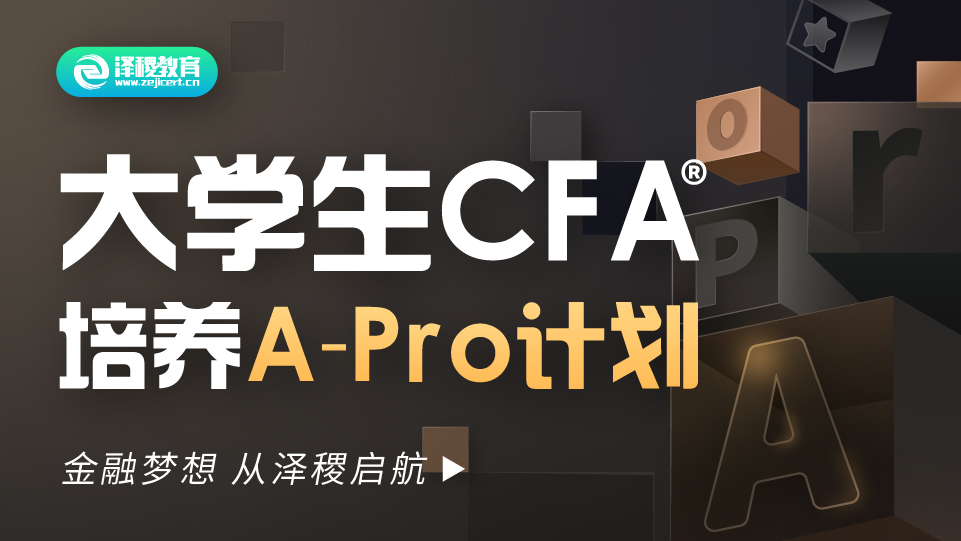ACCA P2考官文章 WHAT DIFFERENTIATES PROFIT OR LOSS FROM OTHER COMPREHENSIVE INCOME?
The purpose of the statement of profit or loss and other comprehensive income (OCI) is to show an entity’s financial performance in a way that is useful to a wide range of users so that they may attempt to assess the future net cash inflows of an entity. The statement should be classified and aggregated in a manner that makes it understandable and comparable. IFRS currently requires that the statement be presented as either one statement, being a combined statement of profit or loss and other comprehensive income or two statements, being the statement of profit or loss and the statement of profit or loss and other comprehensive income. An entity has to show separately in OCI, those items which would be reclassified (recycled) to profit or loss and those items which would never be reclassified (recycled) to profit or loss. The related tax effects have to be allocated to these sections.
Profit or loss includes all items of income or expense (including reclassification adjustments) except those items of income or expense that are recognised in OCI as required or permitted by IFRS. Reclassification adjustments are amounts recycled to profit or loss in the current period that were recognised in OCI in the current or previous periods. An example of items recognised in OCI that may be reclassified to profit or loss are foreign currency gains on the disposal of a foreign operation and realised gains or losses on cash flow hedges. Those items that may not be reclassified are changes in a revaluation surplus under IAS 16, Property, Plant and Equipment, and actuarial gains and losses on a defined benefit plan under IAS 19,Employee Benefits.
However, there is a general lack of agreement about which items should be presented in profit or loss and in OCI. The interaction between profit or loss and OCI is unclear, especially the notion of reclassification and when or which OCI items should be reclassified. A common misunderstanding is that the distinction is based upon realised versus unrealised gains. This lack of a consistent basis for determining how items should be presented has led to an inconsistent use of OCI in IFRS. It may be difficult to deal with OCI on a conceptual level since the IASB are finding it difficult to find a sound conceptual basis. However, there is urgent need for some guidance around this issue.
Opinions vary but there is a feeling that OCI has become a ‘dumping ground’ for anything controversial because of a lack of clear definition of what should be included in the statement. Many users are thought to ignore OCI as the changes reported are not caused by the operating flows used for predictive purposes. Financial performance is not defined in the Conceptual Framework but could be viewed as reflecting the value the entity has generated in the period and this can be assessed from other elements of the financial statements and not just the statement of profit or loss and other comprehensive income. Examples would be the statement of cash flows and disclosures relating to operating segments. The presentation in profit or loss and OCI should allow a user to depict financial performance including the amount, timing and uncertainty of the entity’s future net cash inflows and how efficiently and effectively the entity’s management have discharged their duties regarding the resources of the entity.
RECLASSIFICATION: FOR AND AGAINST
There are several arguments for and against reclassification. If reclassification ceased, then there would be no need to define profit or loss, or any other total or subtotal in profit or loss, and any presentation decisions can be left to specific IFRSs. It is argued that reclassification protects the integrity of profit or loss and provides users with relevant information about a transaction that occurred in the period. Additionally, it can improve comparability where IFRS permits similar items to be recognised in either profit or loss or OCI.
Those against reclassification argue that the recycled amounts add to the complexity of financial reporting, may lead to earnings management and the reclassification adjustments may not meet the definitions of income or expense in the period as the change in the asset or liability may have occurred in a previous period.
The original logic for OCI was that it kept income-relevant items that possessed low reliability from contaminating the earnings number. Markets rely on profit or loss and it is widely used. The OCI figure is crucial because it can distort common valuation techniques used by investors, such as the price/earnings ratio. Thus, profit or loss needs to contain all information relevant to investors. Misuse of OCI would undermine the credibility of net income. The use of OCI as a temporary holding for cash flow hedging instruments and foreign currency translation is non-controversial.
However, other treatments such the policy of IFRS 9 to allow value changes in equity investments to go through OCI, are not accepted universally.
US GAAP will require value changes in all equity investments to go through profit or loss. Accounting for actuarial gains and losses on defined benefit schemes are presented through OCI and certain large US corporations have been hit hard with the losses incurred on these schemes. The presentation of these items in OCI would have made no difference to the ultimate settled liability but if they had been presented in profit or loss, the problem may have been dealt with earlier. An assumption that an unrealised loss has little effect on the business is an incorrect one.
The Discussion Paper on the Conceptual Framework considers three approaches to profit or loss and reclassification. The first approach prohibits reclassification. The other approaches, the narrow and broad approaches, require or permit reclassification. The narrow approach allows recognition in OCI for bridging items or mismatched remeasurements. While the broad approach has an additional category of ‘transitory measurements’ (for example, remeasurement of a defined benefit obligation) which would allow the IASB greater flexibility. The narrow approach significantly restricts the types of items that would be eligible to be presented in OCI and gives the IASB little discretion when developing or amending IFRSs.
A bridging item arises where the IASB determines that the statement of comprehensive income would communicate more relevant information about financial performance if profit or loss reflected a different measurement basis from that reflected in the statement of financial position For example, if a debt instrument is measured at fair value in the statement of financial position, but is recognised in profit or loss using amortised cost, then amounts previously reported in OCI should be reclassified into profit or loss on impairment or disposal of the debt instrument. The IASB argues that this is consistent with the amounts that would be recognised in profit or loss if the debt instrument were to be measured at amortised cost.
A mismatched remeasurement arises where an item of income or expense represents an economic phenomenon so incompletely that, in the opinion of the IASB, presenting that item in profit or loss would provide information that has little relevance in assessing the entity’s financial performance. An example of this is when a derivative is used to hedge a forecast transaction; changes in the fair value of the derivative may arise before the income or expense resulting from the forecast transaction. The argument is that before the results of the derivative and the hedged item can be matched together, any gains or losses resulting from the remeasurement of the derivative, to the extent that the hedge is effective and qualifies for hedge accounting, should be reported in OCI. Subsequently, those gains or losses are reclassified into profit or loss when the forecast transaction affects profit or loss. This allows users to see the results of the hedging relationship.
The IASB’s preliminary view is that any requirement to present a profit or loss total or subtotal could also result in some items being reclassified. The commonly suggested attributes for differentiation between profit or loss and OCI (realised/unrealised, frequency of occurrence, operating/non-operating, measurement certainty/uncertainty, realisation in the short/long-term or outside management control) are difficult to distil into a set of principles.
Therefore, the IASB is suggesting two broad principles, namely:
(a) Profit or loss provides the primary source of information about the return an entity has made on its economic resources in a period.
(b) To support profit or loss, OCI should only be used if it makes profit or loss more relevant.
The IASB feels that changes in cost-based measures and gains or losses resulting from initial recognition should not be presented in OCI and that the results of transactions, consumption and impairments of assets and fulfilment of liabilities should be recognised in profit or loss in the period in which they occur. As a performance measure, profit or loss is more used although there are a number of other performance measures derived from the statement of profit or loss and OCI.
Written by a member of the Paper P2 examining team





 白金級認可培訓資質(總部)
白金級認可培訓資質(總部)
 課程試聽
課程試聽
 職業(yè)規(guī)劃
職業(yè)規(guī)劃
 ACCA中文教材
ACCA中文教材
 考位預約
考位預約
 免費資料
免費資料




 題庫下載
題庫下載
 模擬機考
模擬機考




 CFA?成績查詢
CFA?成績查詢




 GARP協(xié)會官方認可FRM?備考機構
GARP協(xié)會官方認可FRM?備考機構




















